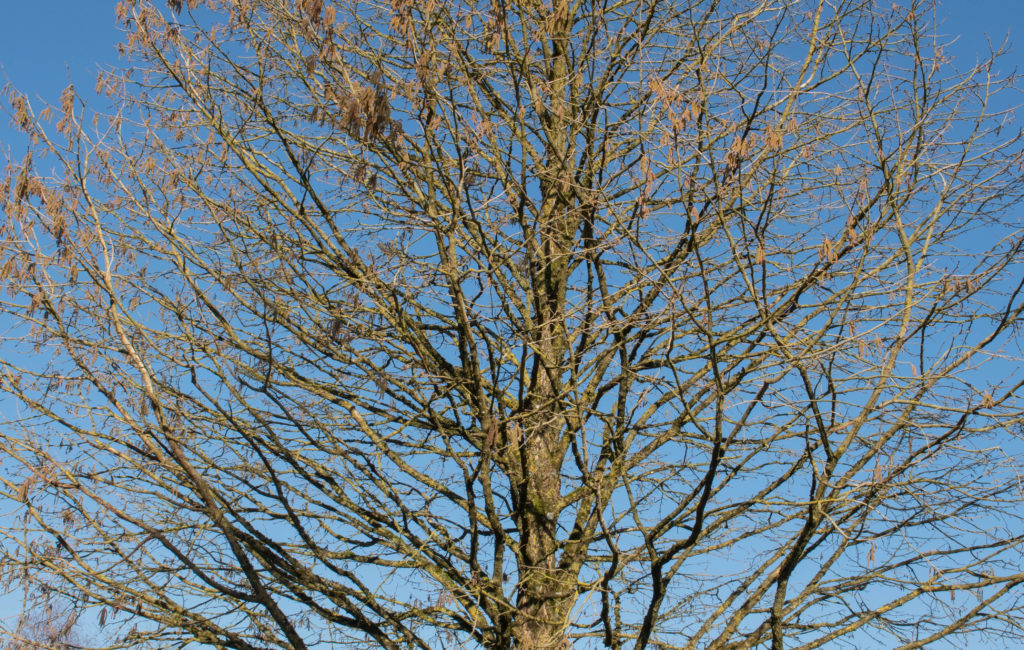

Common name: Turkish Hazel
Scientific name: Corylus colurna
Introduction: The Turkish Hazel is a deciduous tree that is native to South-East Europe and West Asia. They are a medium-sized tree and can reach up to 20m high.
Identification
Leaves: Bright-green, deeply lobed and ovate shaped with toothed edges. In the autumn, these leaves turn into a bright yellow colour.

[Leaves and buds of a Turkish Hazel]
Buds: Greenish-brown and ovoid. They are pressed tightly and are covered by grey-brown scales.
Bark: Grey-brown and roughly textured. Typically quite ‘corky’ which becomes more distinguishable as a tree matures.
Form: Medium-sized tree with a relatively symmetrical shape. They have a fairly columnar shaped crown when young, but as the tree matures, it broadens.
Reproduction:
Turkish Hazels are monoecious meaning they have both male and female flowers. The Turkish Hazel typically flower between February and March. Female Flowers are generally red and inconspicuous. Male catkins are characteristically long and yellow. Once fertilized, small and hard nuts form with frilly-looking husks.
Growth Habit:
Slow to medium growth rate; take between 20-50 years to reach their maximum height.
Interesting Facts:
Despite its appearance, Turkish Hazels are not native to the UK. Instead, they were introduced to the UK for Europe and Asia in the 1500s.
Ecological Importance:
Turkish Hazelnuts are a particularly favoured food source for squirrels.
Properties of Turkish Hazel Wood and its Uses:
Turkish Hazelwood is light-brown in colour and favoured for making furniture. They are also suitable for carving. The wood hardly rots and therefore is also favoured for use underwater.
Styling of Turkish Hazel/Where to Find Them:
Corylus colurna are typically used for avenue and parkland trees, usually being more favoured nowadays over Lime trees as they rarely suffer from ‘aphid drip’. They are also regularly grown in urban areas and are ideal for planting on a mass scale.
Associated Pests and Diseases:
In the UK, caterpillars, sawflies and aphids. However, they are typically disease-free.
Maintenance
Pruning and Pruning Qualities: Turkish hazels require little pruning to thrive. However, they can also respond well to harsh pruning which can result in gaining more abundant foliage. Typically, you should prune them between late winter and to mid-spring. They also can be coppiced or pollarded.
Growth Rate after Pruning: Harsher pruning can result in the tree gaining larger foliage.
Want to get listed on Directree?
Are you a tree surgeon? Click the button to claim your free listing and see our other membership options today!
Are you looking for a tree surgeon?
Are you looking for a professional in your area to help you? Click the button to search our database today!




